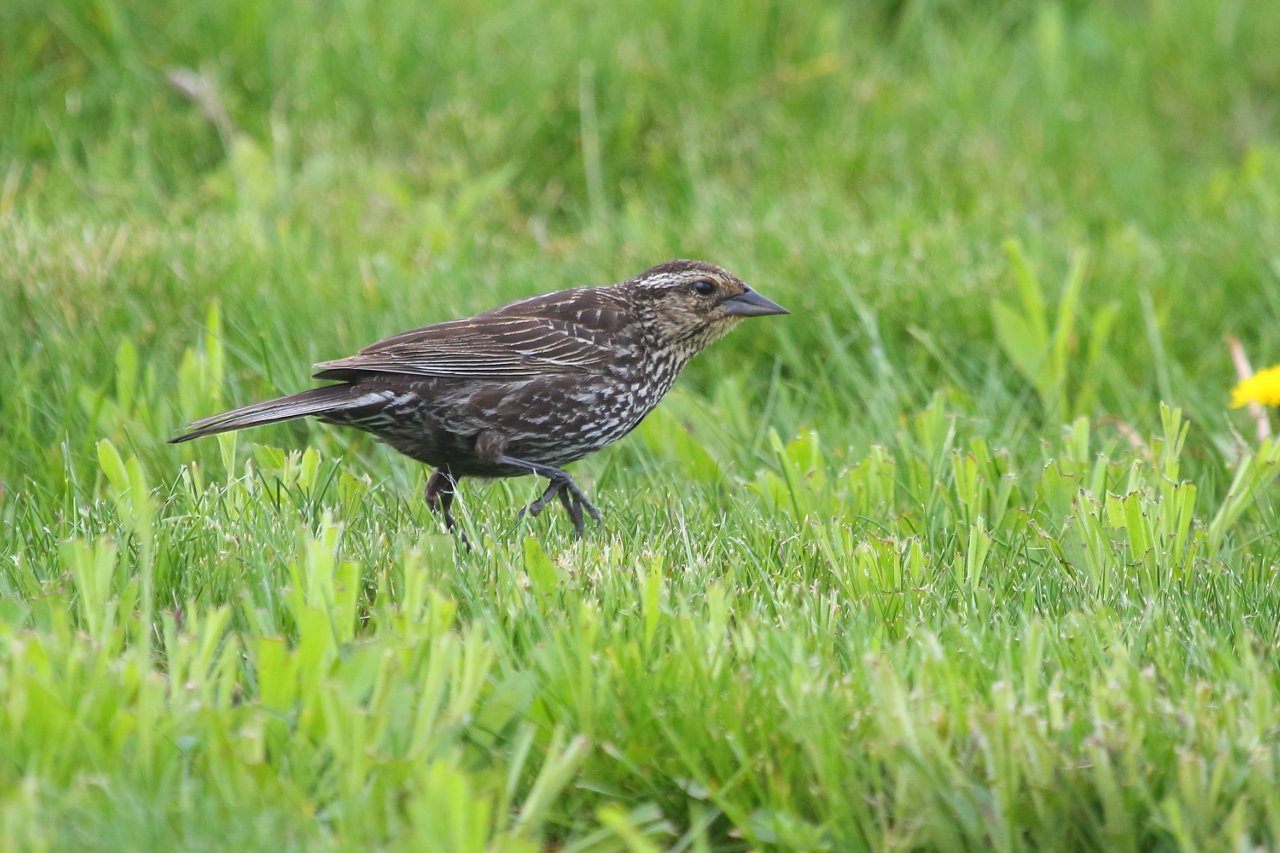Bird of the Month: Red-winged Blackbird
A male Red-winged Blackbird. Photo by Jeff Bryant.
By Roger Digges, CCAS Vice-President
Up until now, males and females of the birds of the month have been similar, and in some cases (chickadees and turkey vultures) virtually impossible to tell apart. Great Horned Owl males and females have slightly different sizes and more noticeably different voice pitches, and Dark-eyed Junco sexes have somewhat different plumages, but one can easily tell they are the same species. Such is not the case with March’s bird of the month.
From late February through March, male Red-winged Blackbirds begin to fill marshes, meadows, field edges, roadsides, prairie restorations, and trees along waterways flashing red epaulets and shouting their distinctive call—conk-a-LEE. Females on the other hand are not black and don’t have epaulets. If you can find them at all, you may think they are a completely different species, their bland plumage covered with brown streaks, their faces tinged somewhat yellow with dark stripes. I remember as a beginning birder asking a more experienced companion what species that large sparrow was. It wasn’t a sparrow. It was a Red-Winged Blackbird.
A female Red-winged Blackbird. Photo by Jeff Bryant.
Males sport such striking plumage to be noticed. They take the highest perch they can find and loudly announce their ownership of it against all comers. Any creature which trespasses on its territory incurs its wrath. I have seen male Red-winged Blackbirds attack other red-wings as well as much larger trespassers—crows, hawks, owls, Bald Eagles, even deer and people. They are aggressive because nesting territory is at a premium, as are nesting females. Females, however, sneak through the grass feeding or building nests, camouflaged by their drab plumage. The males’ bright red wing patches and loud call increase the likelihood that they will attract more females and thus sire more offspring. But their plumage also attracts more predators. Females, however, don’t need to attract males. The males will find them. They need to stay hidden, sitting on their nests and finding food to survive and feed their young. These two verydifferent strategies have led to what biologists call “sexual dimorphism” in this species. While in some birds males and females are different sizes (most birds of prey), Red-winged Blackbirds have different plumage, as do many songbirds (cardinals, bluebirds, orioles, warblers, etc.).
Keep an eye and ear out for male Red-winged Blackbirds as winter merges into spring. Where there are males, there are usually many more females around somewhere. Males mate with 5-15 different females. So watch for them as well, but be careful not to disturb them on their nests.
You may be able to attract Red-winged Blackbirds to your yard if you live close enough to their preferred habitat and scatter grain and seeds on the ground.
How are Red-winged Blackbirds doing? The North American Breeding Bird Survey estimates that the number of Red-winged Blackbirds declined by 28% between 1966 and 2019, likely due to the loss of their favorite habitat, which is marshes and other open wetlands. However, there are still 180 million of them in North America according to Partners in Flight. So enjoy seeing one of our most abundant birds and be an advocate for the preservation and creation of wetland habitats.


